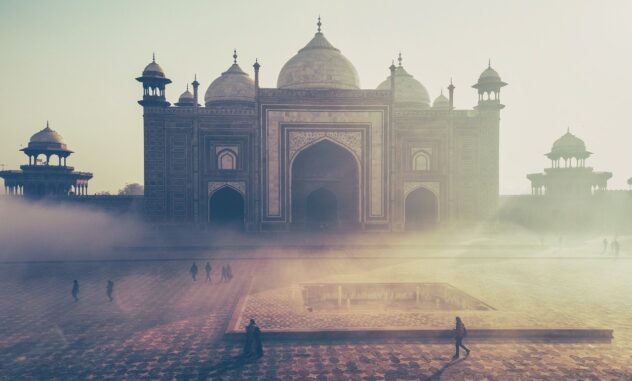
Vocabulary:
I will read the words, meanings, and sample sentences. Then, repeat after me.
- turmoil /TUR-moil/
- collapse /kuh-LAPS/
- drastic /dras-tik/
- restriction /ri-STRIK-shuhn/
- resume /ri-ZOOM/
[noun] – a state of confusion, uncertainty, or disorder
There’s an entire region in turmoil.
[verb] – (of people and business) to suddenly be unable to continue or work correctly
When the housing market collapsed, plenty of people lost their jobs.
[adjective] – (especially of actions) severe and sudden or having very noticeable effects
Drastic measures were implemented by the government to ensure safety.
[noun] – an official limit on something
Do these parking restrictions cover residents as well as visitors?
[verb] – if an activity resumes, or if you resume it, it starts again after a pause
He stopped to take a drink of water, then resumed speaking.
Article reading:
Please read the whole article. Then, I will check your pronunciation and intonation.
India was in turmoil six months ago. Covid-19 patients who were seriously ill were turned away from hospitals. The doctors collapsed out of fatigue. And the virus was increasing through crowded slums, home to millions of the country’s poorest people.
The country looks very different today. New cases have fallen daily, declining from a high of more than 90,000 infections in September to just over 10,000 a day in February. According to COVID19INDIA, a website crowdsourcing Covid-19 data from official sources, the capital Delhi recorded zero virus deaths for the first time in nearly nine months on February 9.
Without drastic steps such as circuit-breaker lockdowns, which have been used to get outbreaks under control in areas like New Zealand and Australia, this has all happened. Some social distance restrictions are still being enforced by the Indian government and it has worked to support overstretched hospitals—but the economy has reopened, domestic travel has resumed, and people are mostly going about their daily lives. The recovery is not likely to be due to vaccines, either.
India has begun its vaccination program to inoculate 300 million citizens by August, but compared to wealthier nations, it is still lagging. So far, according to Our World In Data, a data aggregation website operated by researchers at the University of Oxford, the country has administered less than one dose per 100 people. Experts speculate that several factors are likely to be behind the decline in the number of cases in India, such as the younger population of the country or the possibility of increasing immunity in urban areas.
The country looks very different today. New cases have fallen daily, declining from a high of more than 90,000 infections in September to just over 10,000 a day in February. According to COVID19INDIA, a website crowdsourcing Covid-19 data from official sources, the capital Delhi recorded zero virus deaths for the first time in nearly nine months on February 9.
Without drastic steps such as circuit-breaker lockdowns, which have been used to get outbreaks under control in areas like New Zealand and Australia, this has all happened. Some social distance restrictions are still being enforced by the Indian government and it has worked to support overstretched hospitals—but the economy has reopened, domestic travel has resumed, and people are mostly going about their daily lives. The recovery is not likely to be due to vaccines, either.
India has begun its vaccination program to inoculate 300 million citizens by August, but compared to wealthier nations, it is still lagging. So far, according to Our World In Data, a data aggregation website operated by researchers at the University of Oxford, the country has administered less than one dose per 100 people. Experts speculate that several factors are likely to be behind the decline in the number of cases in India, such as the younger population of the country or the possibility of increasing immunity in urban areas.
Comprehension Questions:
I will read each question. Then, please answer them based on the article.
- What country was in confusion six months ago?
- According to the article, why did the doctors collapse?
- What is COVID19INDIA?
- What were used to get outbreaks under control in New Zealand and Australia?
- What do experts speculate?
Discussion Questions:
I will read each question. Then, please answer them.
- How did you feel after knowing that circuit-breaker lockdowns were not implemented in India?
- Do you think circuit-breaker lockdowns, which have been used to get outbreaks under control in other countries would work in India? Why do you think so?
- Do you think we can lessen the Covid-19 cases by following rules? Why or why not?
- How do you make your immune system strong?
- Has your country already secured doses of vaccines for your people? Tell me more about it.